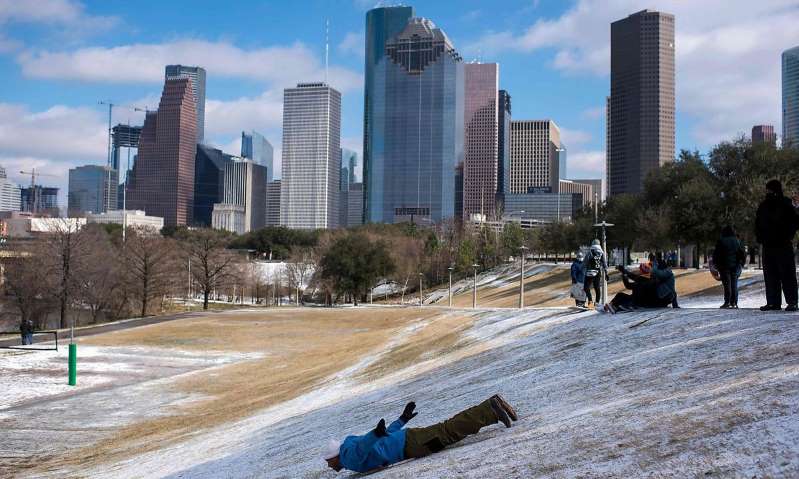![Why the lights go out in the USA [premium]](/wp-content/uploads/2021/02/warum-in-den-usa-das-licht-ausgeht-premium-2f75aff.jpg)
Vienna. Arctic storms and cold weather records have plunged Texas and the neighboring US states into an energy crisis. Wind turbines are frozen, gas pipes are clogged and refineries are out of order. The prices for energy are skyrocketing. Five million Americans take turns in the “controlled blackout” in order to prevent the complete collapse of the power grid. How did this happen and what does the frequent occurrence of such incidents mean for the future of energy? “Die Presse” is looking for answers to the most important questions.
1) Who is to blame for the current blackouts in the US?
In short, the weather. Within a few days, a polar vortex brought so much icy air to Texas that it was sometimes colder in Houston than in Alaska. Naturally, people's energy needs rose sharply. At the same time, however, wind and ice put large parts of the energy supply out of action. Wind turbines and refineries suddenly came to a standstill, and many gas-fired power plants could no longer generate enough electricity. Initially, this “only” led to extreme fluctuations on the energy markets. For example, the price of electricity on the spot markets rose by 3466 percent at the beginning of the week compared to the value on Friday – until it had reached the regulatory maximum.
2) What ultimately triggered the widespread power failure?
The Texas power grid – and all of its energy infrastructure – is built to withstand hot summers, not arctic winters. When a wide variety of power plants with an output of 34 gigawatts suddenly failed, the network operators pulled the emergency brake and sent the Americans into a “controlled blackout”. The supply of millions of electricity customers is planned to be interrupted to prevent the big blackout.
3) Is the switch to renewables one of the reasons for this situation?
Not necessarily. Wind power is the fastest growing power source in Texas and is currently number two after natural gas. But in this current crisis, your frozen rotor blades don't play a major role. Instead, the fossil fuels went to their knees. 27 of the 34 GW of failed capacity are gas-fired power plants. They became indirect victims of the cold spell. In short, the cold caused a pressure drop in the gas pipes, these are more or less “frozen”, the fuel had to be rationed. Private heating had priority – nothing was left for gas-fired power plants.
4) It's cold in Austria too. Can the misery repeat itself here?
In the past few days, the low temperatures have also pushed up energy consumption in Austria – but the country is far from historic highs. Theoretically, wind turbines and gas pipes can also fail in this country, but it is less likely because there are technical possibilities to prevent rotors and pipes from freezing. In sunny Texas they probably did without it. Austria, however, is used to cold winters and is accordingly better prepared.
5) The incidents are increasing. Is the energy supply becoming less secure?
The most recent incidents in the USA, Japan, France and Pakistan show that the dependence on the weather is increasing. All the more so if, as planned, space heating, transport and industry are largely converted to electricity in the future. The question of whether large batteries, hydrogen or natural gas can form a safety network is urgent. Climate change will also drive up the number of extreme weather events. And that means not only hotter summers, but also sudden polar frost.

